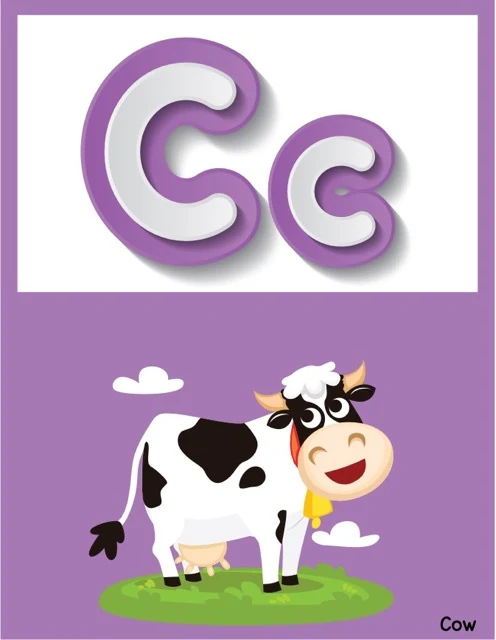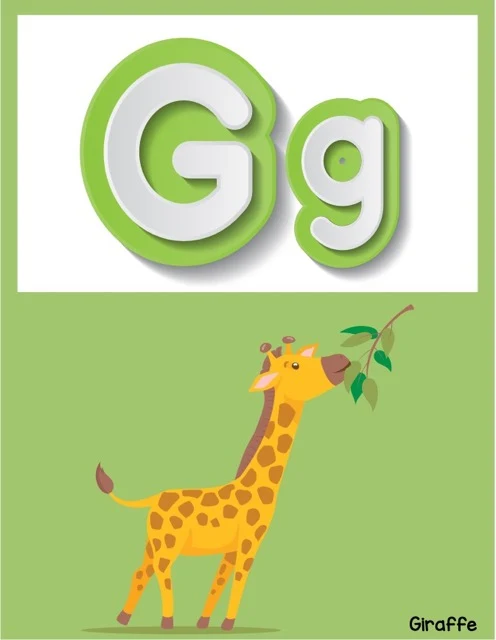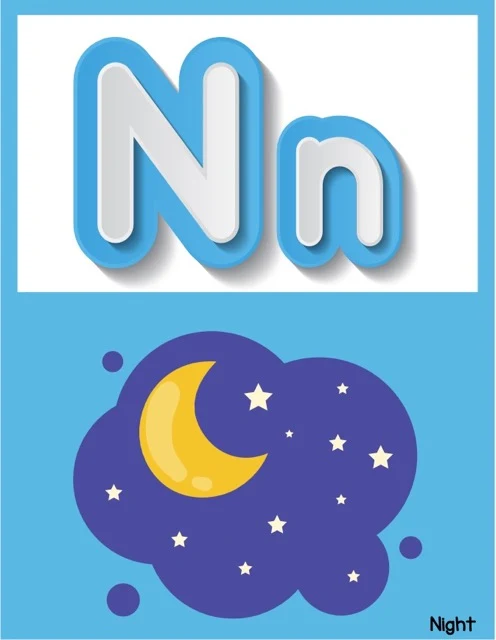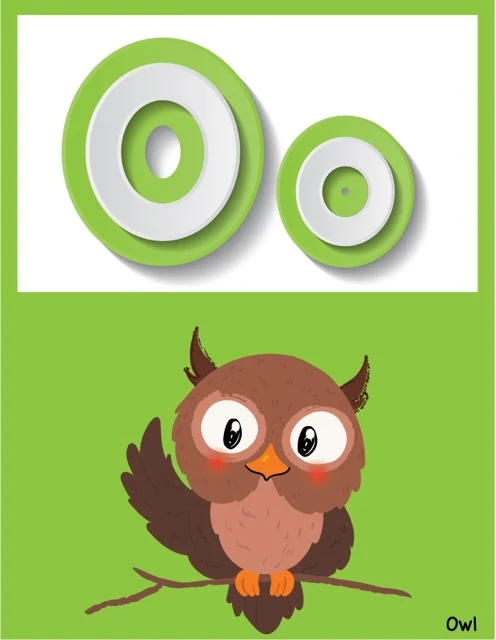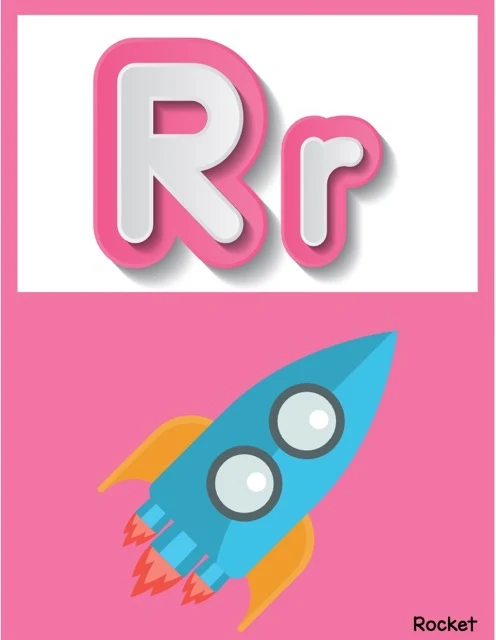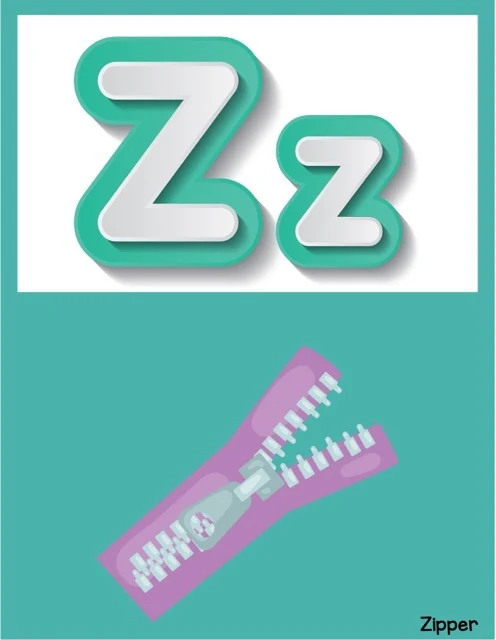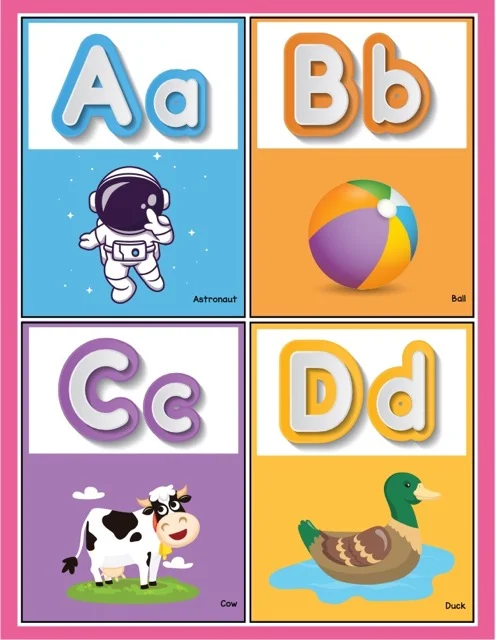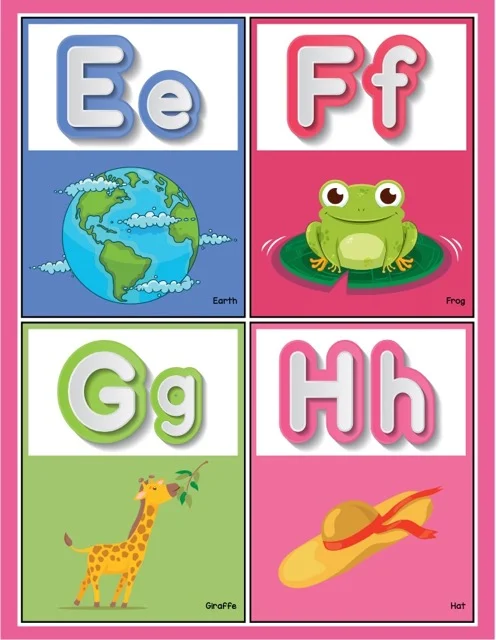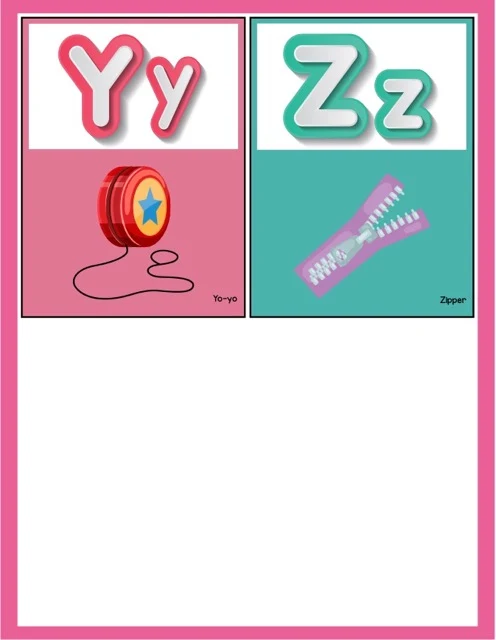Classroom Alphabets and Early Literacy
This document reviews the crucial role of classroom alphabets in early literacy. Effective alphabets, featured in several source materials, are visually engaging, using bright colors and illustrations to aid letter recognition and sound association. Their adaptability allows for use with diverse age groups and learning styles, supporting various literacy activities beyond simple letter identification. The review highlights the importance of clear design and versatile applications for maximizing their educational impact. A sample alphabet from "Testing Theme: Classroom Alphabets.pdf" exemplifies best practices.
Classroom Alphabets: A Comprehensive Review
Classroom Alphabets: A Comprehensive Review
This briefing document reviews the role and importance of classroom alphabets in early literacy development, drawing upon three sources: "Classroom Alphabet Guide," "Classroom Alphabets: A Guide for Educators," and "Testing Theme: Classroom Alphabets.pdf."
Main Themes:
1.
Foundational Literacy Tool: Classroom alphabets are not mere decorations. They are essential tools that provide a consistent visual reference for children learning letter recognition, names, and sounds. As stated in "Classroom Alphabet Guide," they "create an immersive learning environment that reinforces letter recognition throughout the day."
2.
Visual Appeal and Engagement: The effectiveness of classroom alphabets hinges on their visual appeal. Bright colors, engaging fonts, and relevant illustrations make them attractive and memorable for young learners. "Classroom Alphabets: A Guide for Educators" emphasizes the use of "bright colors to capture children's attention and engaging pictures or illustrations to help with letter-sound association."
3.
Multifaceted Applications: Classroom alphabets facilitate various learning activities beyond basic letter recognition. They support letter formation practice, word building activities, and phonemic awareness development. For example, "Classroom Alphabets: A Guide for Educators" suggests using letter cards from the alphabet "to spell simple words. For example, students could select the cards for 'c,' 'a,' and 't' to build the word 'cat'."
4.
Adaptability for Diverse Needs: Classroom alphabets can be tailored to different age groups and learning styles. Simpler designs with bold letters and recognizable images suit younger learners, while older students may benefit from more detailed or thematic alphabets. The "Classroom Alphabet Guide" highlights this adaptability, stating that "for older students, alphabets with more detailed illustrations or thematic connections may be more engaging."
Key Ideas and Facts:
●
Essential Features: Effective classroom alphabets typically include uppercase and lowercase letters, clear fonts, vibrant colors, and accompanying images for letter-sound association.
●
Types of Alphabets: Alphabets can range from simple designs to thematic ones featuring animals, objects, or specific concepts like transportation or food.
●
DIY Options: Teachers can create personalized alphabets using printable templates, craft materials, or even by involving students in the design process.
●
The "Testing Theme" example: The "Testing Theme: Classroom Alphabets.pdf" showcases a visually engaging classroom alphabet with cartoon illustrations, vibrant colors, and both uppercase and lowercase letters, embodying many of the principles outlined in the other sources.
Quotes of Note:
●
"By displaying the alphabet prominently in the classroom, educators create an immersive learning environment that reinforces letter recognition throughout the day." ("Classroom Alphabet Guide")
●
"Classroom alphabets often feature bright colors to capture children's attention and engaging pictures or illustrations to help with letter-sound association." ("Classroom Alphabets: A Guide for Educators")
●
"For older students, alphabets with more detailed illustrations or thematic connections may be more engaging." ("Classroom Alphabet Guide")
Conclusion:
Classroom alphabets are a cornerstone of early literacy education. Their effectiveness relies on a combination of visual appeal, clear design, and versatile applications. By understanding the principles outlined in these sources, educators can leverage classroom alphabets to create a stimulating and supportive learning environment for young learners.
Classroom Alphabet Guide
Classroom Alphabet FAQ
What is a classroom alphabet?
A classroom alphabet is a set of visually appealing charts or posters displaying the letters of the alphabet. These are typically designed to be engaging and easily recognizable for young learners. They often feature bright colors, fun fonts, and accompanying images to help children associate each letter with a corresponding object or animal.
Why are classroom alphabets important?
Classroom alphabets play a crucial role in early literacy development. They serve as a constant visual reference for children learning to recognize, name, and write the letters of the alphabet. By displaying the alphabet prominently in the classroom, educators create an immersive learning environment that reinforces letter recognition throughout the day.
What are some common features of classroom alphabets?
●
Uppercase and lowercase letters: Most classroom alphabets display both uppercase and lowercase letters, helping children differentiate between the two forms.
●
Pictures or illustrations: Engaging images corresponding to each letter are common, aiding in letter-sound association and making the alphabet more visually appealing.
●
Clear and simple fonts: Easy-to-read fonts are essential for clear letter recognition, especially for young learners who are just beginning to develop their literacy skills.
●
Bright colors: Vibrant color palettes make the alphabet stand out and capture children's attention.
How can classroom alphabets be used in the classroom?
●
Alphabet Recognition: Pointing to letters and reciting their names and sounds as a group activity.
●
Letter Formation Practice: Use the alphabet as a visual guide while children practice writing letters.
●
Word Building Activities: Use the letter cards to spell simple words, promoting phonemic awareness and early reading skills.
●
Classroom Decoration: Create a stimulating learning environment by displaying the alphabet prominently on walls or bulletin boards.
Are there different types of classroom alphabets?
Yes, classroom alphabets come in various styles and themes. Some feature animals, objects, or cartoon characters associated with each letter. Others may follow a specific theme like transportation, food, or nature. The choice of alphabet often depends on the teacher's preference and the overall classroom theme.
Can classroom alphabets be used for different age groups?
Yes, classroom alphabets can be adapted for different age groups. For younger learners, simpler designs with clear, bold letters and recognizable images are ideal. For older students, alphabets with more detailed illustrations or thematic connections may be more engaging.
How can I make my own classroom alphabet?
Teachers can create their own classroom alphabets by using printable templates, crafting letters from various materials, or involving students in designing their own alphabet charts. This can be a fun and creative activity that personalizes the learning experience.
Where can I find resources for classroom alphabets?
Numerous online resources offer printable classroom alphabet charts and templates. Educational supply stores also carry a wide variety of pre-made alphabet posters and materials.
Classroom Alphabets: A Guide for Educators
Classroom Alphabets: A Study Guide
Glossary of Key Terms
●
Classroom Alphabet: A visual aid displaying the letters of the alphabet, often with accompanying pictures and colors, used to enhance early literacy development.
●
Letter Recognition: The ability to identify and name individual letters of the alphabet.
●
Letter-Sound Association: The connection between a letter and the sound it represents.
●
Phonemic Awareness: The understanding that spoken words are made up of individual sounds (phonemes).
●
Word Building: The process of combining letters to form words, promoting reading and spelling skills.
●
Immersive Learning Environment: A classroom setting where learning opportunities are integrated into the surroundings, fostering continuous engagement.
Short-Answer Quiz
1.
What is the primary purpose of a classroom alphabet?
2.
Describe two common features of a classroom alphabet that aid in visual appeal and engagement.
3.
Explain how a classroom alphabet can be used to support letter formation practice.
4.
Why is it important for a classroom alphabet to display both uppercase and lowercase letters?
5.
How can classroom alphabets be used to promote phonemic awareness?
6.
Give an example of how a teacher might use a classroom alphabet for word-building activities.
7.
What is a thematic classroom alphabet, and how might it be beneficial?
8.
How can a teacher differentiate the use of a classroom alphabet for younger and older students?
9.
Besides pre-made posters, what are two ways teachers can create their own classroom alphabets?
10.
Why is it important to use clear and simple fonts in a classroom alphabet?
Short-Answer Quiz Answer Key
1.
The primary purpose of a classroom alphabet is to provide a visual reference that supports young learners in recognizing, naming, and writing the letters of the alphabet.
2.
Classroom alphabets often feature bright colors to capture children's attention and engaging pictures or illustrations to help with letter-sound association.
3.
A classroom alphabet can be used as a visual guide during letter formation practice. Children can refer to the correct letter formation on the chart while practicing writing the letters themselves.
4.
Displaying both uppercase and lowercase letters is important because it helps children differentiate between the two forms, which is essential for reading and writing.
5.
Classroom alphabets can be used to promote phonemic awareness by associating each letter with its corresponding sound. Teachers can point to letters and have students repeat the sounds, helping them understand that words are made up of individual sounds.
6.
A teacher could use a classroom alphabet for word-building activities by providing individual letter cards that students can manipulate to spell simple words. For example, students could select the cards for "c," "a," and "t" to build the word "cat."
7.
A thematic classroom alphabet follows a specific theme like transportation, food, or nature. This can be beneficial as it provides a context for learning the alphabet and can make it more engaging and relatable for students.
8.
Teachers can differentiate the use of a classroom alphabet by choosing simpler designs with clear, bold letters and recognizable images for younger learners. For older students, alphabets with more detailed illustrations or thematic connections may be more appropriate.
9.
Teachers can create their own classroom alphabets by using printable templates or by crafting letters from various materials, such as felt, paper, or cardboard.
10.
Using clear and simple fonts in a classroom alphabet ensures that the letters are easily recognizable, especially for young learners who are still developing their visual discrimination skills. Complicated fonts can hinder letter recognition.
Essay Questions
1.
Discuss the importance of incorporating visual aids like classroom alphabets in early literacy instruction. How do they contribute to a child's developing understanding of the alphabet and its connection to language?
2.
Explain several ways a teacher can effectively utilize a classroom alphabet beyond simple letter recognition. Consider activities that encourage letter-sound association, word building, and early reading skills.
3.
Analyze the significance of using engaging and visually stimulating designs in a classroom alphabet. How do factors like color, font, and imagery impact a child's learning experience?
4.
Compare and contrast the benefits of using pre-made classroom alphabet posters versus creating personalized alphabets with student involvement. Consider factors like time, cost, engagement, and learning outcomes.
5.
Design a thematic classroom alphabet for a specific grade level and subject area. Explain the rationale behind your theme choice, the visual elements you would include, and the learning activities you would facilitate using your alphabet.


